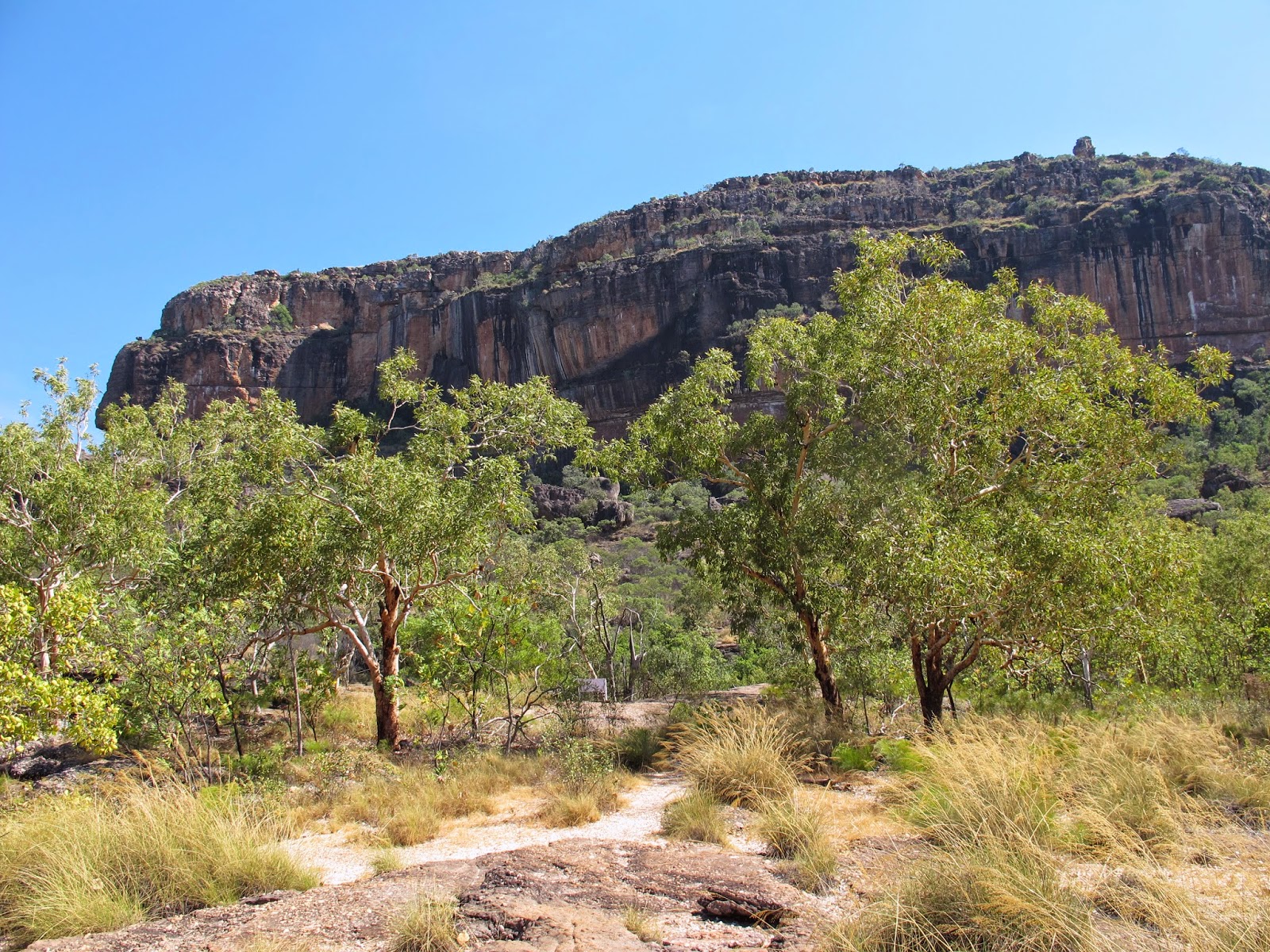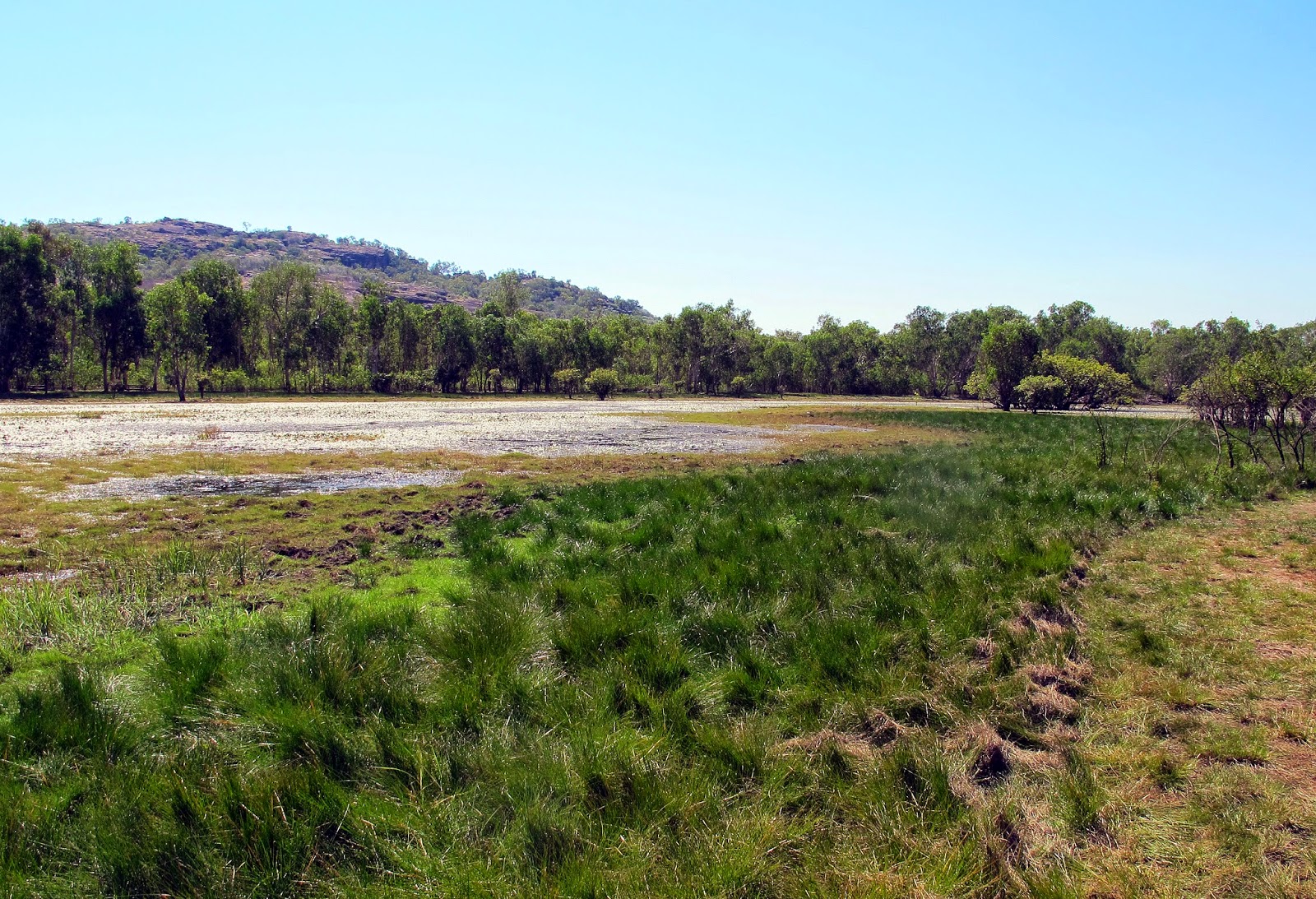 |
| Approach to Nourlangie, Kakadu National Park |
 |
| Nourlangie Rock, Kakadu |
| Namarrgon Djadjam |
 |
| Nourlangie Rock |
 |
| Anbangbang |
| Nabulwinjbulwinj |
 |
| Lightning Man, Namarrgon, and Namondjolg |
The big form beside him is that of Namondjok but first lets see Lightning Man's wife, Barrginj. She is the figure below Namondjok. Barrginj [ Barr-jeen] is important because she is the mother of the Alyurr, the grasshoppers. These grasshoppers are important because, in the creation time, they gave the Aboriginal people their language, beliefs, values and structure of their society. The Alyurr, the amazingly beautiful blue and orange grasshoppers, are rarely seen today however they are said to appear just before the wet season when they call to their father, Lightning Man, to bring stormy relief to the people and the parched land.
Now back to Namondjok. While there are different stories about this same spirit ancestor, our guide explained that Namondjok broke clan rules by marrying unlawfully. Aboriginal laws dictate whom people may or may not marry and this is a cautionary tale that reminds people of the clan rules about marriage. Now, in Aboriginal clans a sister does not necessarily mean one's sibling but includes their first cousins on both sides of the family and also some other less clear relationships. Anyway Namondjok married his sister and was transformed into an estuarine crocodile. Other clans tell that Namondjok is an ancestor who now lives in the sky and is seen only at night near the Milky Way.
 |
| Namondjok's feather |
Some of the art work at Anbangbang cave has been repainted many times and this shows the conditions, events and animals of the time of the repainting.
 |
| Anbangbang |
 |
| Anbangbang |
 |
| Anbangbang |
 |
| Anbangbang |
 |
| Anbangbang Billabong late June |
